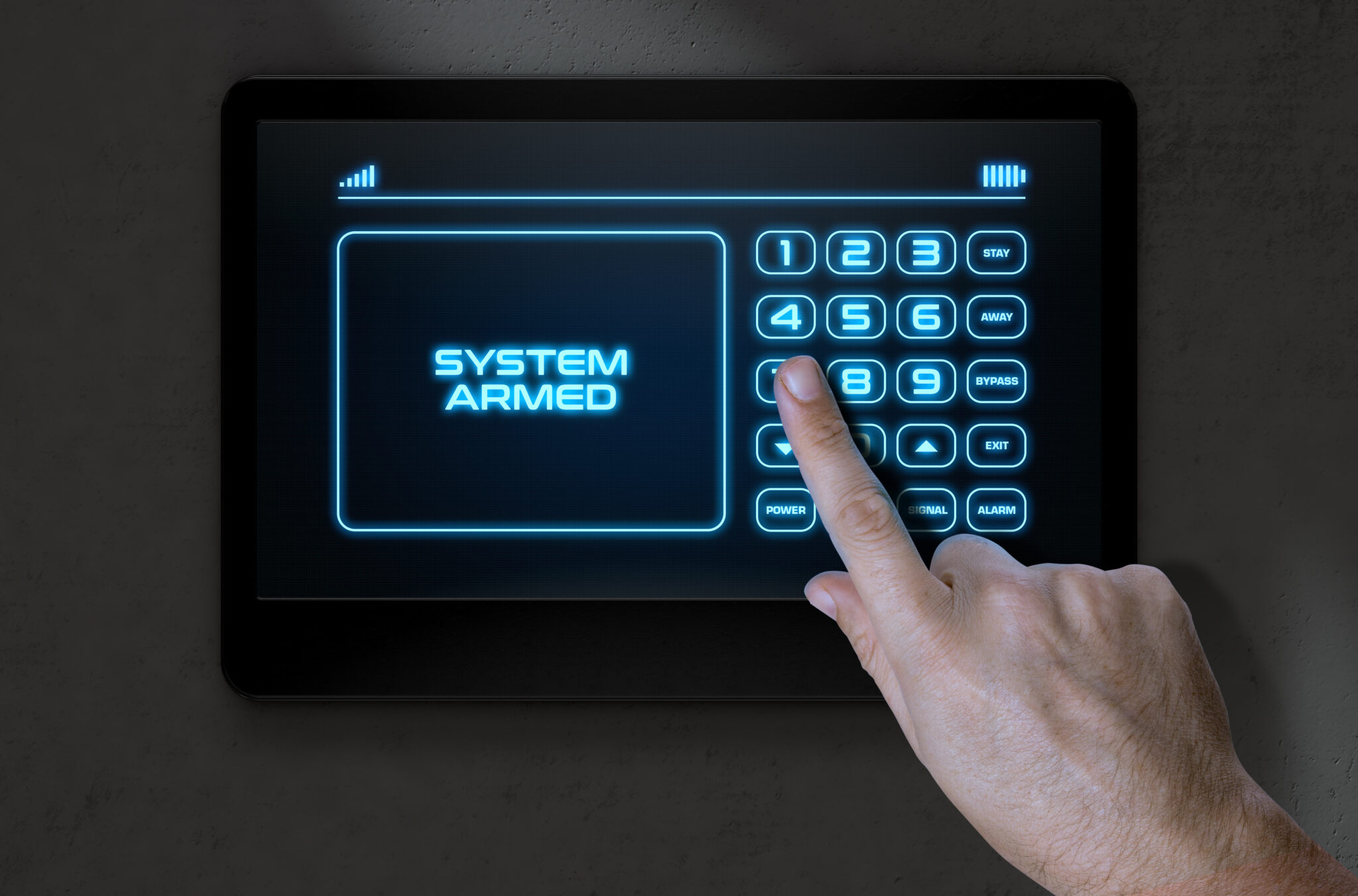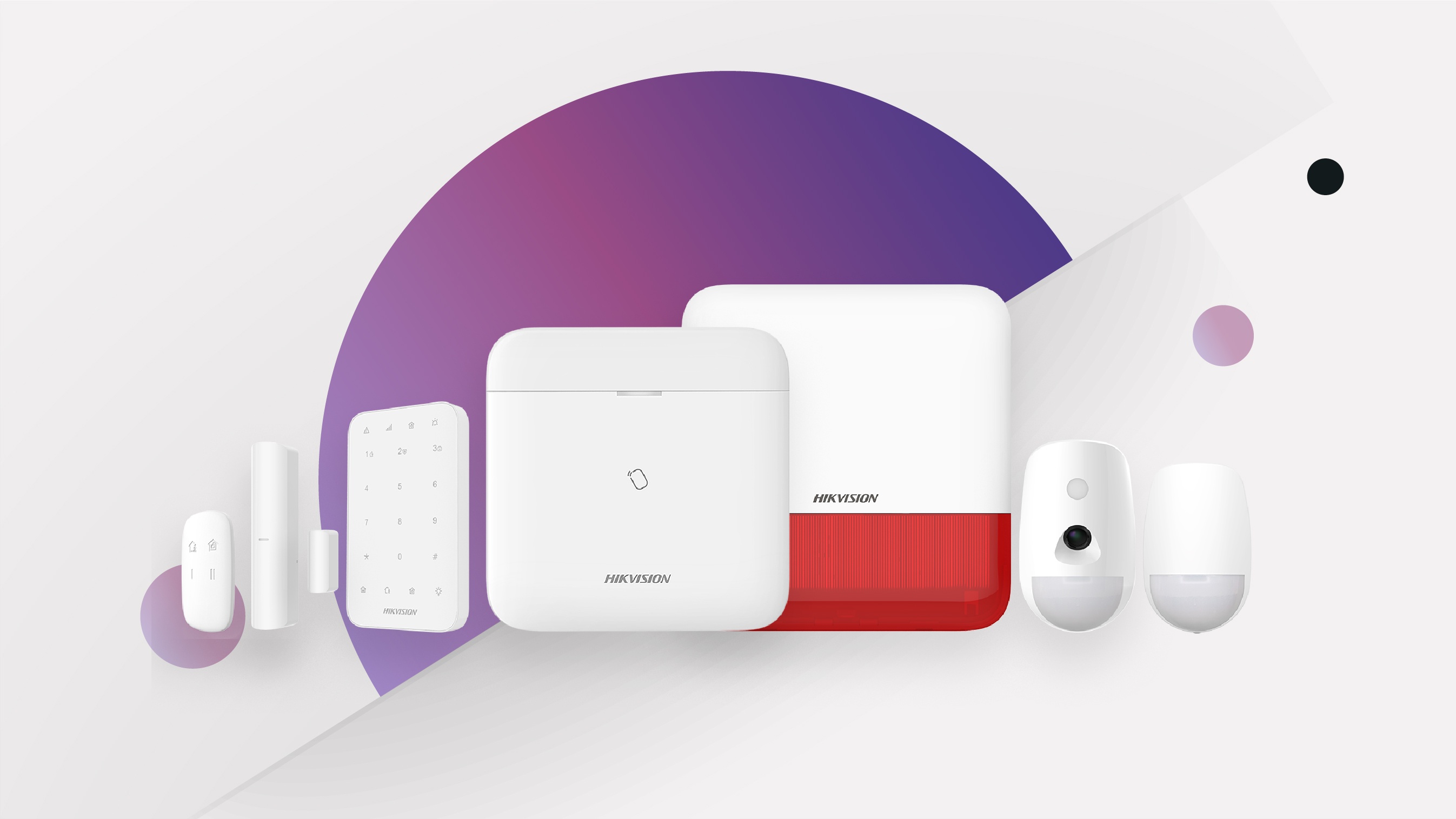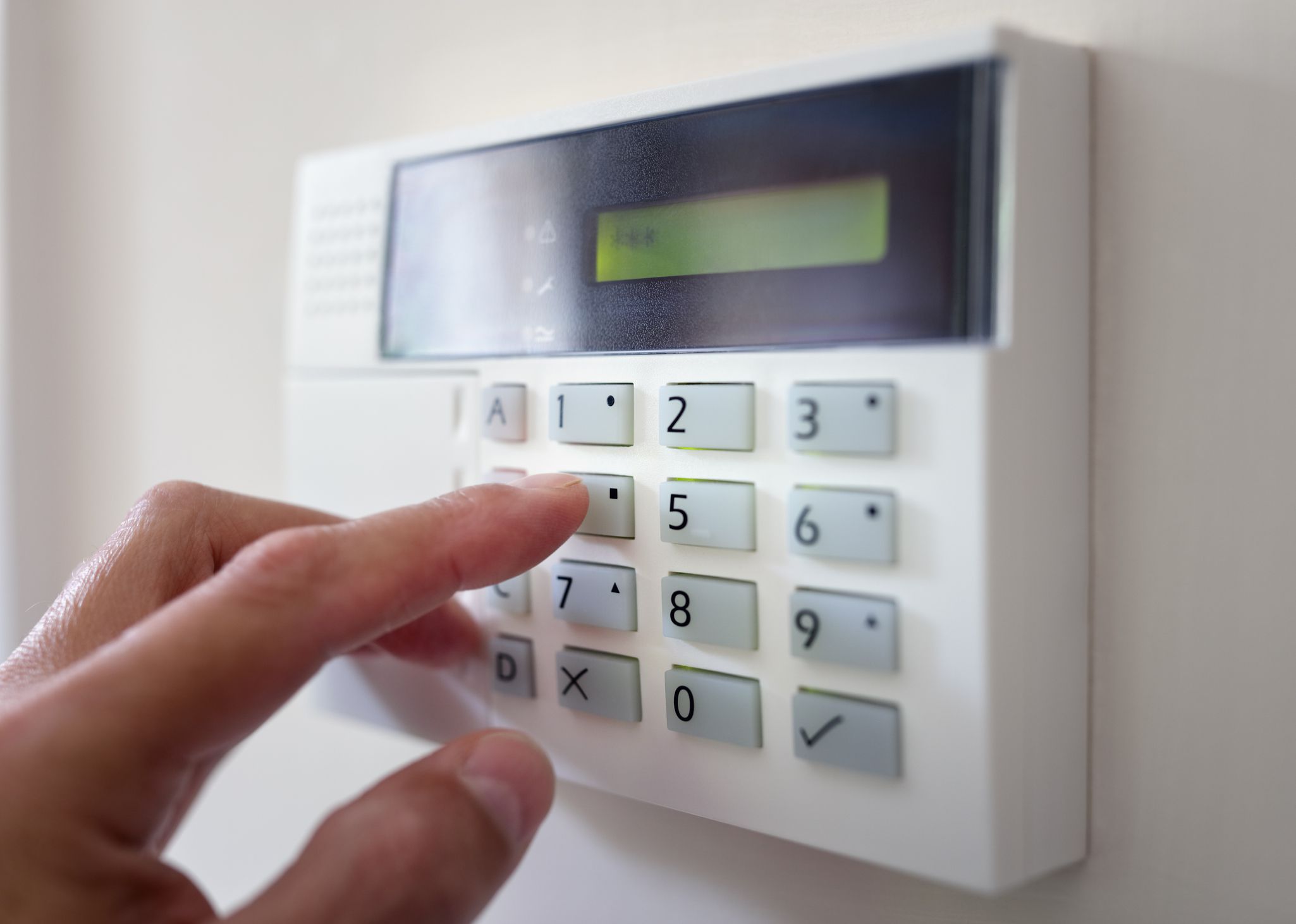Home>Home Security and Surveillance>What Layer Do Intrusion Detection System Work On


Home Security and Surveillance
What Layer Do Intrusion Detection System Work On
Modified: March 21, 2024
Discover how home security and surveillance systems protect your property against intrusions. Learn which layer of defense intrusion detection systems operate on.
(Many of the links in this article redirect to a specific reviewed product. Your purchase of these products through affiliate links helps to generate commission for Storables.com, at no extra cost. Learn more)
Introduction
Welcome to the world of home security and surveillance! In today’s rapidly changing world, ensuring the safety of our homes has become a top priority. With the advancements in technology, home security systems have evolved to provide comprehensive protection and peace of mind. One key component of these systems is the intrusion detection system, which serves as a vital layer of defense against unauthorized access.
An intrusion detection system works by monitoring and analyzing network traffic to identify any suspicious activity or unauthorized attempts to access a network. It plays a crucial role in safeguarding your home and ensuring the privacy of your personal information. In this article, we will explore the different layers on which intrusion detection systems operate and how they contribute to enhancing the security of your home.
Key Takeaways:
- Intrusion detection systems work on multiple layers, including physical, data link, network, transport, session, presentation, and application layers, to provide comprehensive protection against unauthorized access and ensure the security of personal information.
- Each layer of an intrusion detection system has a specific role, such as detecting physical intrusion attempts, ensuring reliable communication, managing data delivery, establishing secure connections, and providing user-friendly functionalities, contributing to the overall effectiveness of home security systems.
Layer 1: Physical Layer
The first layer of an intrusion detection system is the physical layer. This layer deals with the actual physical components of your home security system, such as cameras, sensors, and alarms. These devices are strategically placed in and around your home to detect any physical intrusion attempts.
Cameras are the eyes of your home security system. They capture live video footage and provide a visual record of any suspicious activities. Modern cameras are equipped with features like night vision, motion detection, and high-resolution recording, ensuring that you have a clear view of what’s happening in and around your property.
Sensors are another vital component of the physical layer. They are designed to detect any changes in the environment and trigger an alarm if necessary. For example, door and window sensors can detect if someone tries to force entry or open a window, while motion sensors can pick up any movement within their range.
Alarms are the final line of defense in the physical layer. When triggered by sensors or other warning signals, they emit loud noises to alert occupants and neighbors of a potential security breach. Alarms not only act as a deterrent but also help to create a sense of urgency and prompt a swift response from security personnel or homeowners themselves.
The physical layer of an intrusion detection system is crucial because it forms the foundation of your home security. By employing state-of-the-art cameras, sensors, and alarms, you can deter potential intruders and reduce the risk of unauthorized access to your property.
Layer 2: Data Link Layer
The second layer of an intrusion detection system is the data link layer. This layer focuses on the communication between devices within your home security system. It ensures the integrity and reliability of data transmission, allowing for seamless connectivity and effective surveillance.
In a home security system, various devices, such as cameras, sensors, and control panels, need to communicate with each other to function cohesively. The data link layer facilitates this communication by establishing a reliable connection and managing the flow of data.
One key element of the data link layer is the use of protocols. Protocols define the rules and procedures for transmitting data between devices. For example, Ethernet and Wi-Fi are commonly used protocols in home security systems. They govern how data is packaged, transmitted, and received, ensuring that devices can communicate effectively.
Another important aspect of the data link layer is error detection and correction. With the use of error detection codes, such as checksums, the system can identify and correct any errors that occur during data transmission. This helps to ensure the accuracy and integrity of the transmitted information, reducing the risk of false alarms or missed critical events.
The data link layer also plays a role in access control. By using techniques like MAC (Media Access Control) filtering, the system can restrict access to authorized devices only. This adds an extra layer of security and prevents unauthorized devices from gaining access to your home security network.
Overall, the data link layer is essential in ensuring smooth communication and reliable data transmission within your home security system. By employing robust protocols, error detection and correction techniques, and access control mechanisms, this layer enhances the overall effectiveness of your intrusion detection system.
Layer 3: Network Layer
The third layer of an intrusion detection system is the network layer. This layer focuses on the routing and delivery of data packets within your home security network. It plays a crucial role in ensuring that data reaches its intended destination securely and efficiently.
The network layer utilizes IP (Internet Protocol) addressing to identify devices within your home security network. Each device is assigned a unique IP address, allowing for seamless communication between devices and networks. This addressing scheme enables data packets to be correctly routed from the source device to the destination device.
Another important function of the network layer is packet forwarding. When a device tries to communicate with another device within the network, the network layer determines the best path for the data packets to reach their destination. This process involves analyzing the routing tables and making decisions based on factors like network congestion, reliability, and speed.
Security features such as firewalls and virtual private networks (VPNs) are also implemented at the network layer. Firewalls monitor incoming and outgoing network traffic, ensuring that only authorized connections are allowed and filtering out potential threats. VPNs, on the other hand, create a secure, encrypted connection between devices, preventing unauthorized access and ensuring the confidentiality of data.
The network layer is crucial in maintaining the security and integrity of your home security system. By efficiently routing data packets, implementing security measures, and managing network traffic, this layer ensures that your intrusion detection system operates smoothly and securely.
Layer 4: Transport Layer
The fourth layer of an intrusion detection system is the transport layer. This layer is responsible for establishing a reliable and efficient communication channel between devices within your home security network.
The transport layer uses protocols such as TCP (Transmission Control Protocol) and UDP (User Datagram Protocol) to ensure the secure and accurate delivery of data packets. TCP provides a reliable, connection-oriented service, guaranteeing that data is transmitted in the correct order and without errors. UDP, on the other hand, is a connectionless protocol that trades reliability for speed, making it suitable for real-time applications such as video streaming.
One of the key functions of the transport layer is segmentation and reassembly. When data is transmitted across a network, it is divided into smaller units called segments. The transport layer ensures that these segments are properly received by the destination device and reassembles them into the original data. This process helps to optimize network performance and ensures efficient data transmission.
Flow control and congestion control are also managed at the transport layer. Flow control ensures that data is transmitted at a pace that the receiver can handle, preventing overload and data loss. Congestion control, on the other hand, manages network congestion by regulating the rate of data transmission to prevent bottlenecks and ensure smooth operation.
Security measures, such as encryption and authentication, are implemented at the transport layer to protect data during transmission. Encryption algorithms ensure that data is encrypted before transmission and can only be decrypted by authorized recipients, enhancing the confidentiality of sensitive information. Authentication mechanisms verify the identity of devices within the network, preventing unauthorized access and tampering.
The transport layer is essential in establishing a reliable and secure communication channel within your home security network. By implementing protocols for data delivery, managing flow and congestion, and ensuring data security, this layer plays a vital role in the overall effectiveness of your intrusion detection system.
Intrusion Detection Systems (IDS) work on the network and application layers to monitor and analyze traffic for potential security threats. They can detect and respond to unauthorized access or malicious activities on a network.
Layer 5: Session Layer
The fifth layer of an intrusion detection system is the session layer. This layer is responsible for establishing and maintaining sessions or connections between devices within your home security network. It ensures that data is exchanged securely and efficiently between devices.
The session layer manages the creation, maintenance, and termination of sessions between devices. It establishes a communication channel or session between two devices, allowing them to exchange data. This layer also handles session initiation, authentication, and synchronization to ensure that the devices are properly connected and ready to communicate.
In a home security system, the session layer plays a crucial role in managing user authentication and access control. It verifies the identity of users or devices trying to establish a session and grants or denies access based on predefined security policies. This layer also manages the encryption and decryption of data exchanged during the session, ensuring the confidentiality and integrity of the information.
The session layer is responsible for managing session timeouts and handling session interruptions. It detects if a session has been dormant for too long and terminates it to free up resources. In the case of session interruptions or disruptions, this layer helps in reestablishing the connection and resuming the session seamlessly.
Additionally, the session layer often includes features for session management, such as session logging and auditing. These features help in monitoring and tracking session activities, allowing for forensic analysis in the event of a security breach or suspicious activity.
Overall, the session layer plays a crucial role in establishing and managing secure sessions between devices within your home security network. By ensuring proper authentication, encryption, and session management, this layer enhances the overall security and effectiveness of your intrusion detection system.
Layer 6: Presentation Layer
The sixth layer of an intrusion detection system is the presentation layer. This layer focuses on the representation and transformation of data exchanged between devices within your home security network. It ensures that data is presented in a standardized format and can be understood by both the sending and receiving devices.
The presentation layer is responsible for data encryption and decryption. It ensures that sensitive data is encrypted before transmission and can only be decrypted by authorized recipients. This layer utilizes encryption algorithms to protect the confidentiality and integrity of the data, adding an additional layer of security to your home security system.
In addition to encryption, the presentation layer is also responsible for data compression. It compresses data to reduce its size, optimizing network bandwidth and improving transmission efficiency. This helps to minimize latency and ensures that data can be transmitted quickly and effectively.
The presentation layer also handles data formatting and conversion. It standardizes the format of data exchanged between devices to ensure compatibility and interoperability. For example, it may convert data from one format to another, such as converting text files to PDF or image files to JPEG, depending on the requirements of the receiving device.
Furthermore, the presentation layer supports data transformation, ensuring that data can be interpreted correctly by both the sender and the receiver. This may involve tasks such as character encoding translation, ensuring that special characters are properly interpreted and displayed.
Overall, the presentation layer plays a vital role in ensuring that data exchanged within your home security network is secure, standardized, and can be properly understood by both the sender and receiver. By handling encryption, compression, formatting, and transformation of data, this layer contributes to the overall efficiency and effectiveness of your intrusion detection system.
Layer 7: Application Layer
The seventh and final layer of an intrusion detection system is the application layer. This layer is responsible for providing the interface and functionalities that allow users to interact with your home security system. It encompasses the applications and services that make up the user-facing aspect of your intrusion detection system.
The application layer includes various software programs and protocols that enable users to control and monitor their home security system. This can include web-based interfaces, mobile applications, and other tools that allow users to view live camera feeds, receive alerts, and manage their security settings.
One key aspect of the application layer is user authentication and access control. It ensures that only authorized individuals can access and control the home security system. This can involve using passwords, biometric authentication, or other forms of authentication to verify the user’s identity.
Another important functionality of the application layer is event management and notification. It monitors and analyzes data from various sensors, cameras, and other components of the intrusion detection system to detect and notify users of potential security events or breaches. This can include sending alerts via email, SMS, or push notifications to keep users informed in real-time.
The application layer also allows users to configure and customize their home security system according to their specific needs and preferences. This can include setting up motion detection zones, adjusting camera angles, or scheduling specific security events, such as arming and disarming the system at specific times.
Furthermore, the application layer can include additional features such as remote monitoring, remote control, and integration with other smart home devices. This allows users to access and control their home security system from anywhere, using their mobile devices or web browsers.
The application layer acts as the interface between the user and the underlying layers of the intrusion detection system. By providing user-friendly interfaces, advanced features, and secure access control, this layer enhances the overall usability and effectiveness of your home security system.
Conclusion
Home security and surveillance are of utmost importance in today’s world, and intrusion detection systems play a crucial role in safeguarding our homes. These systems operate across multiple layers to provide comprehensive protection against unauthorized access and ensure the privacy and security of our personal information.
In this article, we explored each layer of an intrusion detection system and its significance in enhancing home security. We started with the physical layer, which includes cameras, sensors, and alarms that detect and deter physical intrusion attempts. Moving to the data link layer, we learned about protocols, error detection, and access control mechanisms that ensure reliable communication within the system.
The network layer focuses on routing and delivery of data packets, implementing security measures such as firewalls and VPNs. The transport layer ensures the secure and efficient delivery of data, managing flow control and implementing encryption and authentication. The session layer establishes and maintains secure connections between devices, managing session timeouts and interruptions.
The presentation layer handles data encryption, compression, formatting, and transformation, contributing to the secure and standardized exchange of data. Finally, the application layer provides user-facing functionalities, including authentication, event management, customization, and remote access.
By integrating these layers, intrusion detection systems create a robust defense mechanism for our homes. They detect and respond to potential security breaches, allowing us to take appropriate actions to protect our loved ones and valuables.
It is important to note that while intrusion detection systems greatly enhance home security, they should be complemented with other measures such as physical barriers, strong passwords, and regular updates of the system’s software and firmware.
In conclusion, by understanding the layers of an intrusion detection system and their roles, we can better appreciate the complexity and effectiveness of these systems in ensuring the safety and security of our homes. Investing in a reliable and comprehensive intrusion detection system is a worthy step towards achieving peace of mind and protecting what matters most.
Frequently Asked Questions about What Layer Do Intrusion Detection System Work On
Was this page helpful?
At Storables.com, we guarantee accurate and reliable information. Our content, validated by Expert Board Contributors, is crafted following stringent Editorial Policies. We're committed to providing you with well-researched, expert-backed insights for all your informational needs.














